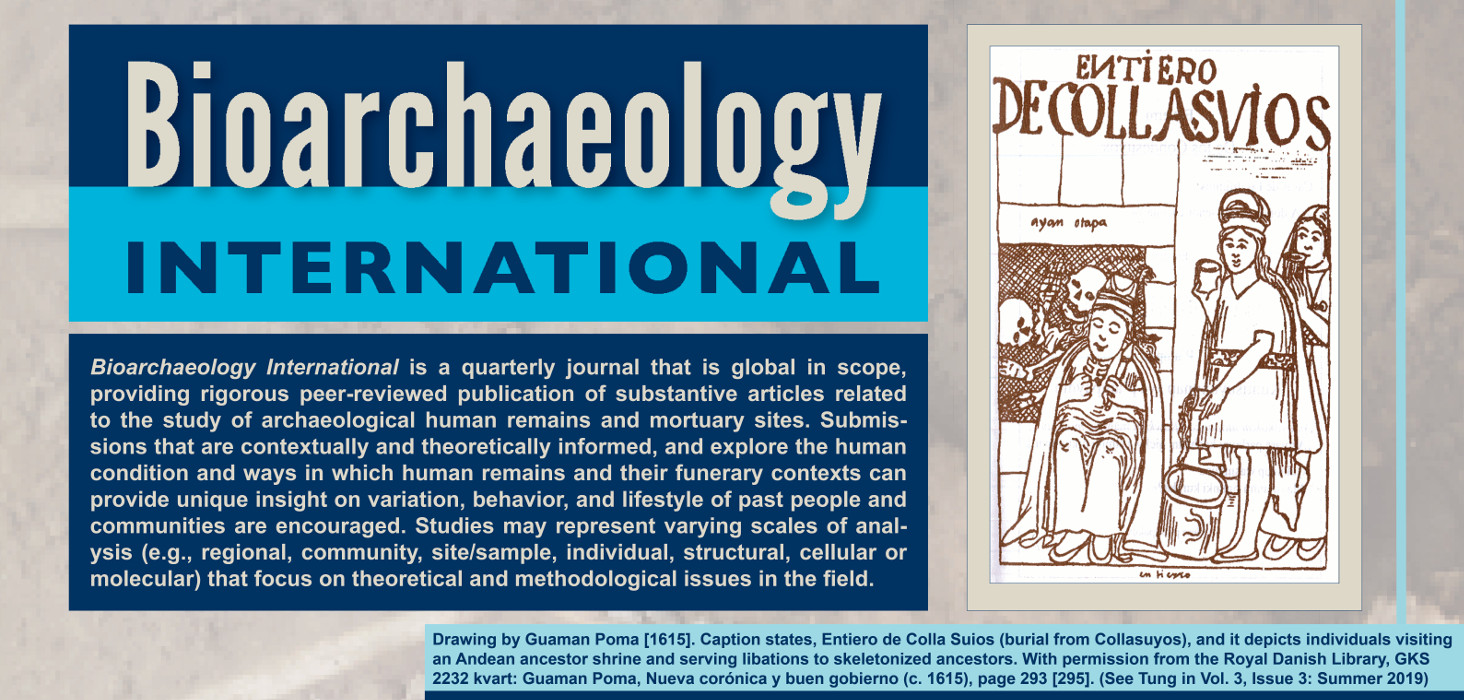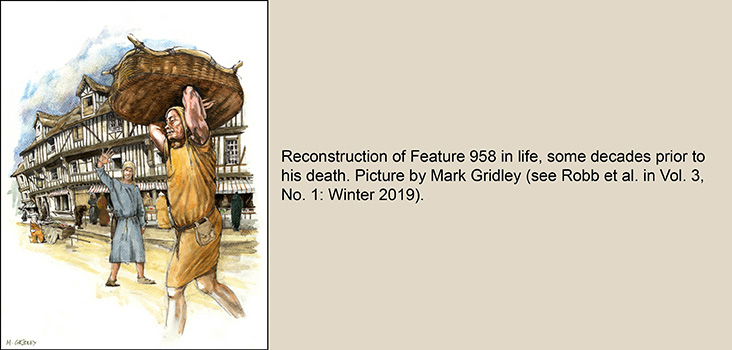Bioarchaeology International provides rigorous peer-reviewed publication of substantive articles in the growing field of bioarchaeology. This vibrant, interdisciplinary field of study cross-cuts biological anthropology, archaeology, and social theory to situate past peoples within their biological, cultural, and environmental circumstances. Bioarchaeology emphasizes not only the study of human remains but the integrative analysis and interpretation of their context, including the archaeological, socio-cultural and political milieu, and environmental setting. Bioarchaeologists use both state-of-the-art methodological innovation and theory to investigate a diversity of questions.
The goal of this journal is to publish research articles, brief reports, and invited commentary essays that are contextually and theoretically informed and explore the human condition and ways in which human remains and their funerary contexts can provide unique insight on variation, behavior and lifestyle of past people and communities. Submissions from around the globe using varying scales of analysis that focus on theoretical and methodological issues in the field are encouraged.
Bioarchaeology International is included in multiple indexes and databases, including Ebsco Academic Search Ultimate, Gale Academic OneFile, ProQuest Central, and ProQuest Social Science Database.
Current Issue
Vol. 9 No. 2 (2025)
Research Articles
Possible Behavioral Changes Associated with Severe Cranial Trauma at Early Bronze Age Bab adh-Dhra’
71–86
AbstractThe osteological remains of individuals from the Early Bronze Age II–III site of Bab adh-Dhra’, located in modern-day Jordan, indicate...
Using Content and Bibliometric Network Analysis to Understand the Development and Study of "Violence" in Bioarchaeology
87–105
AbstractViolence is an interdisciplinary concept subjected to the fluctuations of social and personal perceptions of morality, ethics, and justice....
Social Determinants of Head Trauma?
Skull Fractures in Nineteenth-Century Male Prisoners in Graz, Austria-Hungary
106–122
AbstractThis study investigates whether social factors influence patterns of head trauma in a bioarchaeological population sample of known identity. By...
Letter to the Editor
Comments on “‘How to Do a Good Job of Body Snatching’: Historicizing Radiogenic and Stable Isotopic Studies,” by Pamela L. Geller
123–124
AbstractJ. M. Wampler Letter to the Editor



